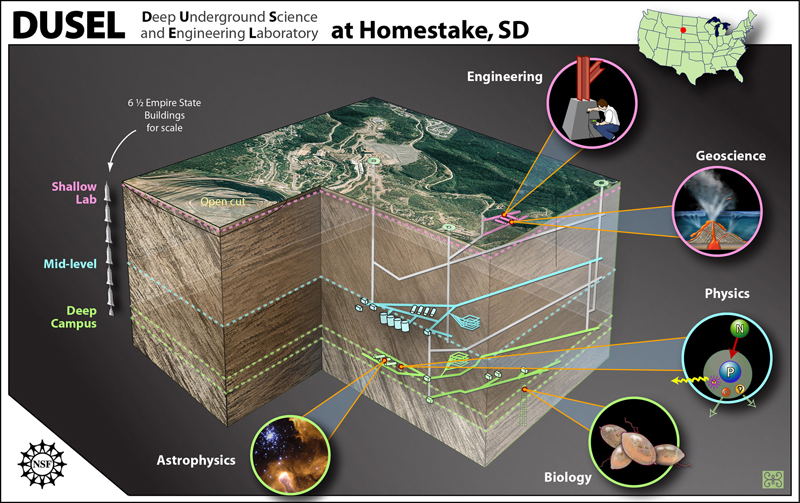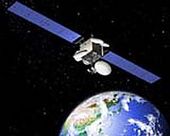This week, the Sanford Lab dedicated an underground science fortress to research dark matter. The lab is 5,000 feet underground in the mountains of South Dakota, shielded from cosmic radiation.
The lab is on a site that used to do physics research, and was a gold mine before that. The current Sanford Lab, in collaboration with the Deep Underground Science and Engineering Laboratory (DUSEL), is the deepest underground lab in the world. It's divided into three levels: the shallow lab, the mid-level, and the deep campus. The deep campus is 6 and a half Empire State Buildings deep, or around 8,000 feet.

© Zina Deretsky, National Science Foundation






